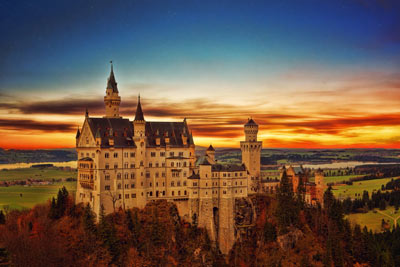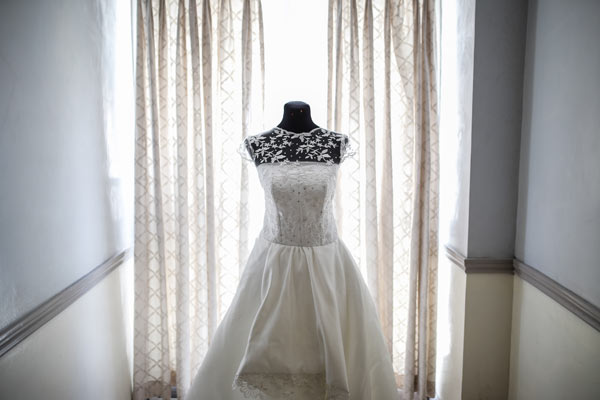German Wedding Traditions
GermanWedding Traditions
GermanWedding Traditions
Traditions
 We have included many traditions from Germany, and certain traditions in the United States. Please feel free to contact us with your comments, and any other traditions which you would like us to include. Enjoy!
We have included many traditions from Germany, and certain traditions in the United States. Please feel free to contact us with your comments, and any other traditions which you would like us to include. Enjoy!
Major Religious Beliefs
The most prominent religious denomination in Germany is Christianity (64%). The second largest religion is Islam with 3.3 million adherents (4%) followed by Buddhism and Judaism, both with around 200,000 adherents. About 24.4 million Germans (29.6%) have no registered religious denomination. From Wikipedia.org.
Engagement rings are worn on the left hand. After the ceremony, the same rings are placed on the right hand. Engagement rings are commonly plain gold bands; rarely, if ever, ‘the big rock’ of a diamond. An early wedding tradition involved driving the bride’s furniture to her future home in a cart, with driver and musicians. At the threshold, the bridegroom greets her with a jug of beer; she gave him a pair of shoes, a shirt she spun and wove, and a key to her bridal chest.
The wedding eve party, called ‘Polterbend‘ (rumbling night), is held in which the couple is teased and dishes broken. Friends and family, and even the couple purchase cheap china (unless they already have some.) Only the couple has the privilege to toss the china down the stairs the night before the ceremony. Each guest might bring a special food. This occasion continues until the early hours of the morning and may be followed by a breakfast at the bride’s parent’s home.
A wedding contract called ‘Heiratsvertrag‘ (previously ‘Fraktur’) is made, a precursor to prenuptial agreements.
The church where your wedding takes place may be at a different location from the civil wedding. In Northern Germany, when a bridal pair is going to church, it is the custom, before they leave the house, to throw a firebrand on the threshold over which they must pass.
‘Roping the couple is a tradition in which red ribbons and garlands of flowers are placed across their exit; the bridegroom must buy their ransom with money or the promise of a party.
It is bad luck to try on someone else’s crown, or take her own off before midnight, when it is replaced by a bonnet. The bridegroom, best man, and bridesmaids then dance around the blindfolded bride. She must catch a bridesmaid (the next to marry). Married women then tie the bridal bonnet on this maid, who must dance with all the bridegroom’s male relatives around three lit candles on the floor. If they are not extinguished by the end of dancing, the marriage will be smooth.
At the newlywed home, the couple share a bite of bread, symbolizing they never will be short of food. In some regions, the bride is pushed into the kitchen at once, as a housewife, she must first put salt in the soup. A more common tradition among newlyweds involves the groom carrying the bride across the threshold of their home.
A Civil Ceremony
In Germany there is a large difference between a civil and a religious wedding. A religious wedding can only take place if you have had a civil ceremony at the Registry office. Civil wedding ceremonies are only possible inside the Registry office, and religious weddings can normally only be celebrated inside churches. The majority of Germans marry in civil ceremonies. It is celebrated under the premise that at least one person (bride or groom) is a (temporary) resident in Germany. The registration is done, in most cases, at the Standesamt in the city or town hall, or in a smaller town, at the police station. The non-resident may need to gather the required paperwork and obtain affidavits from a consulate or embassy. This can also mean that you stay in a hotel or private house and register your presence at the police. This address must exist at least 3 weeks before the wedding. A civil wedding may be held a few days before the religious wedding.
Due to an old law in Germany, the application for the marriage license usually must be hung out at a public building for at least one week so that the general public is informed – Anschlag. Non-residents can make other arrangements through an international registry office (only four).
After the civil ceremony, the couple is joined by a number of friends and family (including those who witnessed the ceremony) and toasted with champagne. They then go to lunch.
A Religious Wedding
A religious wedding can only take place if you have had a civil ceremony at the Registry office. No minister is allowed to perform civil weddings. Civil wedding ceremonies are only possible inside the Registry office, and religious weddings can normally only be celebrated inside churches. In earlier years, a horse-drawn carriage with black horses transported the bridal couple to and from the church. Today, limousines and full sized cars are used.
On the wedding morning, a breakfast called ‘morning soup‘ or ‘bridal soup‘ is served for the guests. Most weddings are held in the late morning. The groom calls for his bride (who may be hidden for him to find) and drives her to the church.
Guests usually seat themselves. There are no groomsmen or ushers. Usually the first pews are reserved for the family.
The children walk as pages, little girls wear fresh flowered wreaths.
In many parts of Germany, when the priest joins the hands of the couple, the bride tries, in a literal sense, to get the upper hand. The bridegroom tries to do the same, and often a struggle of hands ensues, which is sometimes settled by the priest placing the man’s hand uppermost.
One of the pair, generally the bride, also tries for the same purpose to put her foot on top of the groom’s shoe. When the couple kneels during the ceremony, the groom may kneel on the hem of the bride’s gown, to symbolize he will keep her in order. The bride may step on his foot when she rises, to assert herself.
Guests may be invited to the couple’s home, a banquet hall or country mansion for a reception. Champagne, white wine or schnapps may be served at the reception.
Planning
Coming Soon
Checklists
Coming Soon
Tips
Coming Soon
Dresses
 The bride may wear an heirloom gown, or one from an older sister or her mother, or purchase a new gown. Each has her own elaborate wedding crown constructed of wire, tinsel, artificial flowers, pearls, ribbon and pins. Young girls wear wreaths made of fresh flowers if they are pages in the ceremony. One reader mentioned that she was a flower girl for a wedding in the Black Forest region. The flowers in her basket were lily of the valley, an extremely popular flower at weddings, ranking second after the rose in traditional weddings. Orchids are most popular in modern weddings
The bride may wear an heirloom gown, or one from an older sister or her mother, or purchase a new gown. Each has her own elaborate wedding crown constructed of wire, tinsel, artificial flowers, pearls, ribbon and pins. Young girls wear wreaths made of fresh flowers if they are pages in the ceremony. One reader mentioned that she was a flower girl for a wedding in the Black Forest region. The flowers in her basket were lily of the valley, an extremely popular flower at weddings, ranking second after the rose in traditional weddings. Orchids are most popular in modern weddings
Cakes
 German Style:
German Style:
This sort of cake is exceptionally conventional from the south-east of Germany, the Black Forest district. In spite of the fact that it is generally trusted that the first type of this sort of cake originates from Switzerland, Germans have consummated it and made it as renowned as it is these days.
The cake itself is made of a couple of layers of chocolate cake isolated by fruits and bested by whipped cream, chocolate shavings, and some more fruits for enhancing purposes. A Swedish rendition of the Black Forest cake likewise exists, in spite of the fact that it has little to do with the first German formula since it is made of meringue and whipped cream.
Resources and References
Special Thanks to Lois Pearce, Master Bridal Consultant of Hamden, Connecticut, for her time and energy gathering the majority of information used here. We also wish to thank the Association of Bridal Consultants for their assistance. Please note: The information contained in this category should be considered general in nature. We believe it to be true and an accurate representation of some of the customs and traditions for this country or religion. Information provided by individuals and organizations is assumed to be correct.
You are welcome to write or email us at join@weddingdetails.com with any suggestions for changes, additions and deletions. Please direct correspondence to
WeddingDetails
10850 Traverse Hwy, Ste 2225
Traverse City, MI 49684
Weddings by Elaine, Elaine Parker
Multimedia Microsoft Encarta, 1994
Barbara Lawson, German native
The German Way, German Internet Resources, including religions

 German Style:
German Style: